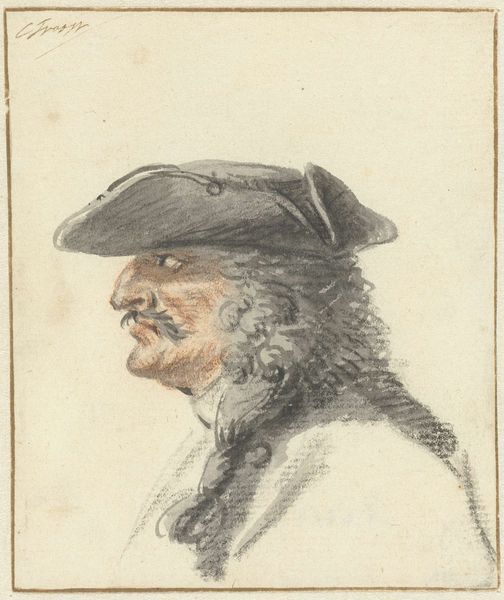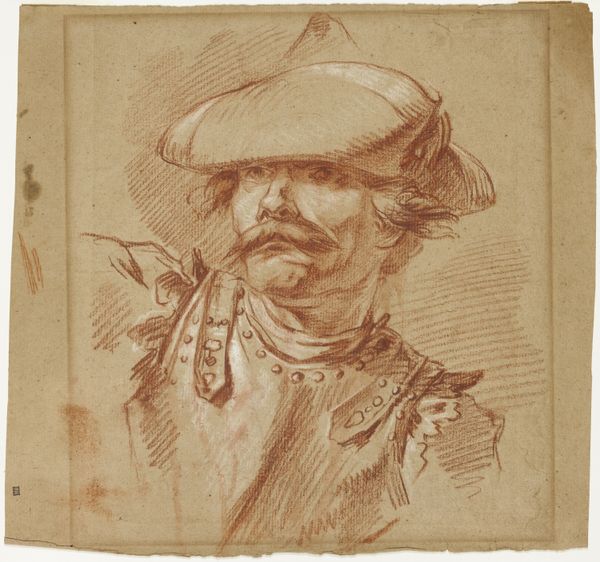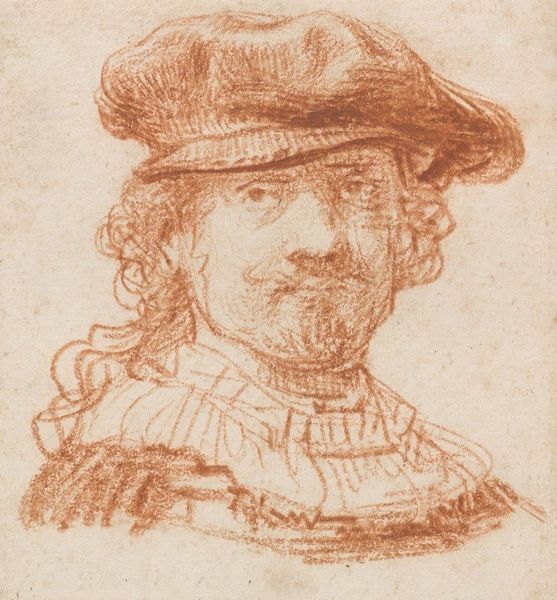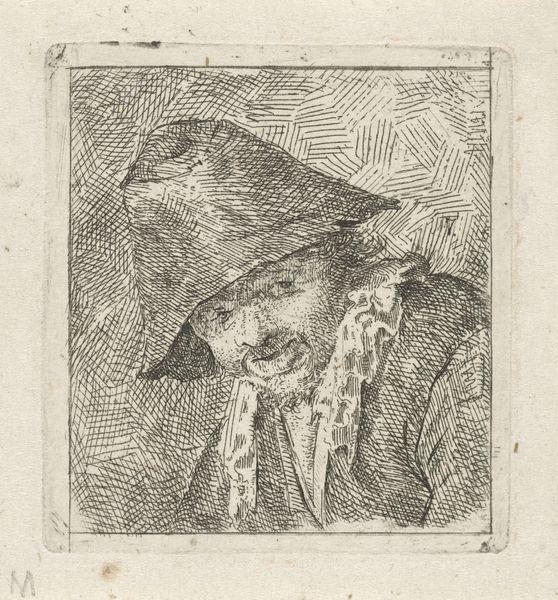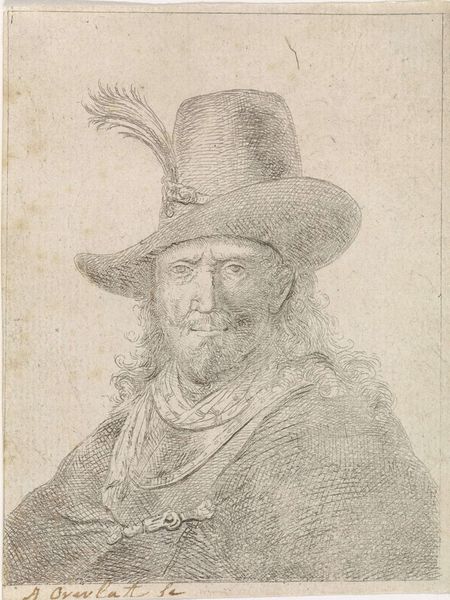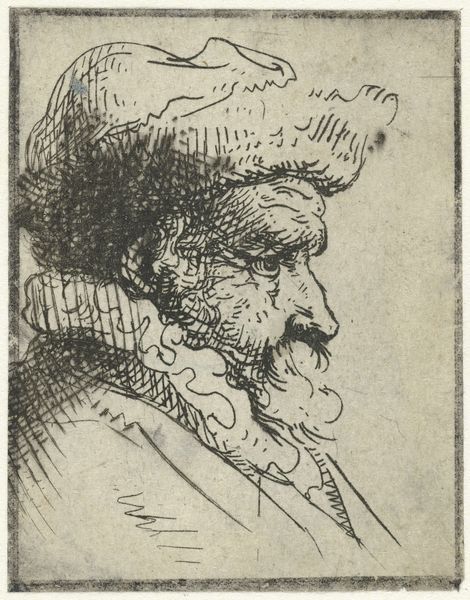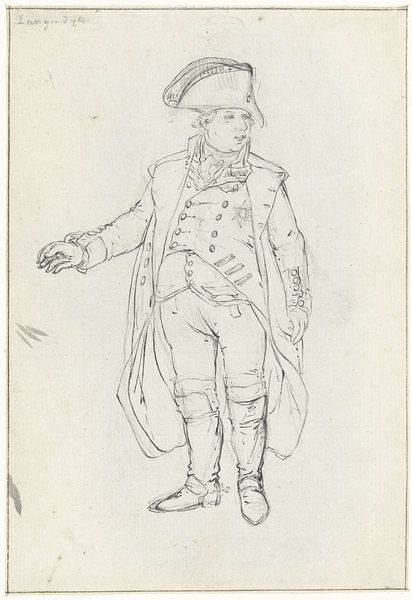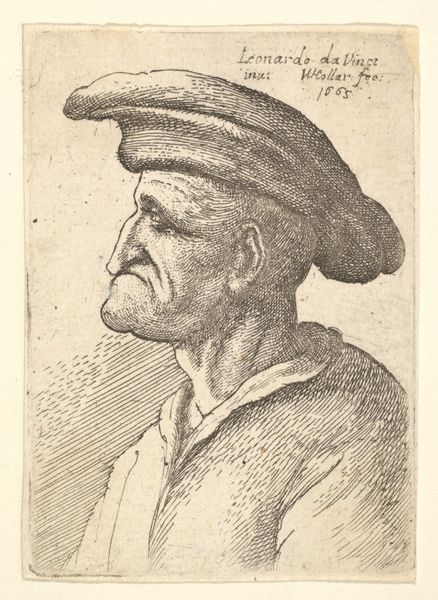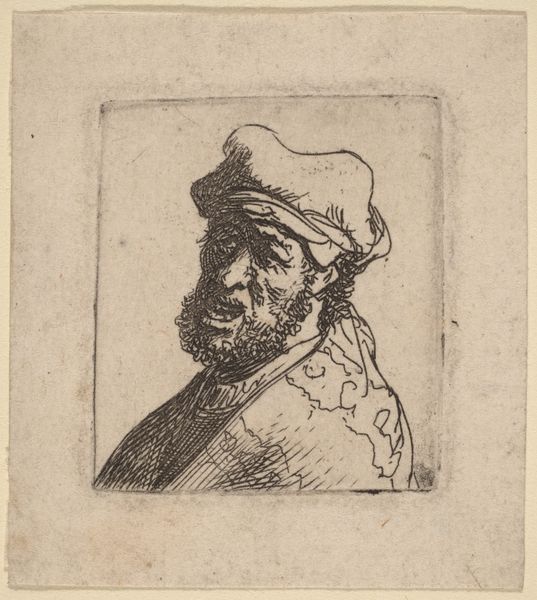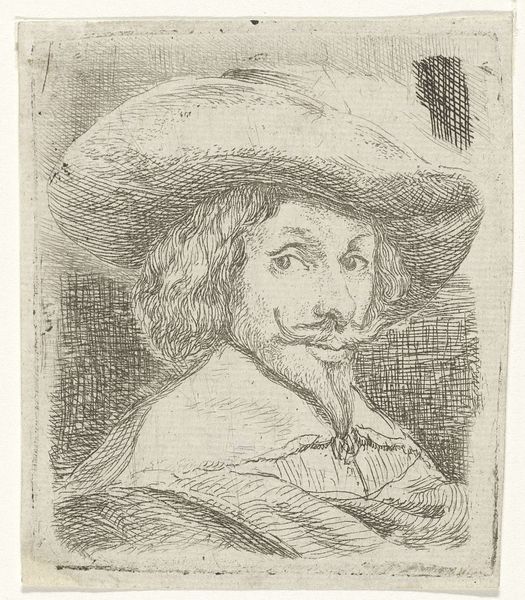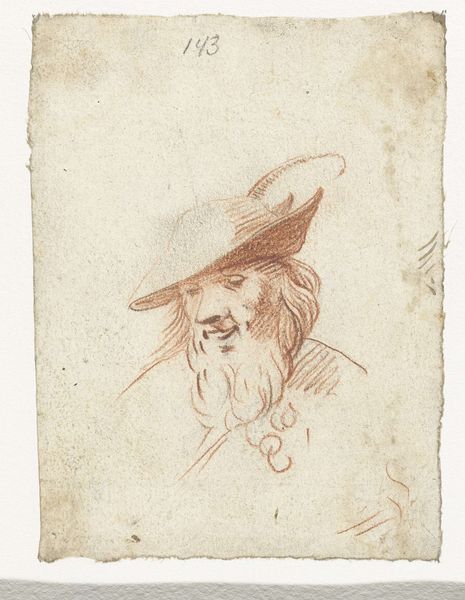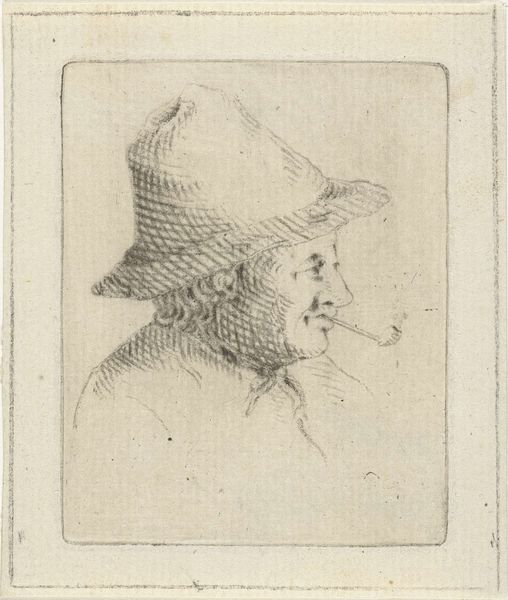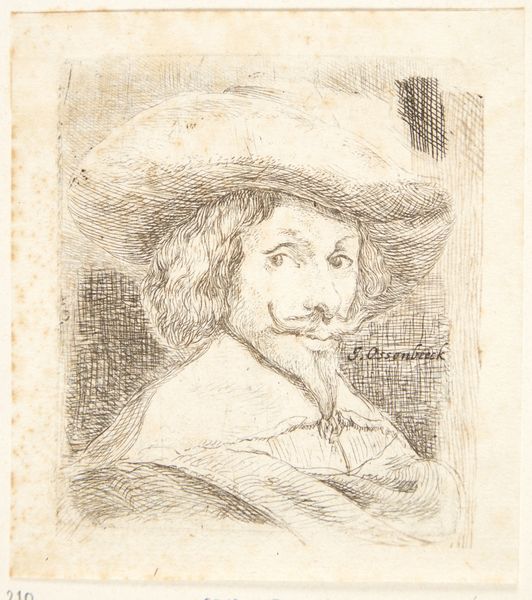
drawing, paper, pencil
#
portrait
#
drawing
#
16_19th-century
#
pencil sketch
#
paper
#
pencil drawing
#
pencil
#
portrait drawing
#
academic-art
Dimensions: height 96 mm, width 62 mm
Copyright: Rijks Museum: Open Domain
Editor: We’re looking at “Portret van een man met een steek,” or "Portrait of a Man with a Tricorne," by David Bles, done sometime between 1831 and 1899. It’s a pencil drawing on paper currently housed in the Rijksmuseum. It's very sketch-like, almost a study. I'm immediately drawn to the man’s very assertive, almost pompous, expression. What do you see in this piece, thinking about its context? Curator: What strikes me is the social signaling embedded within this seemingly simple portrait. Think about the historical context. A "steek," or tricorn hat, during this period, would have carried significant social and political weight. Its association with authority, specifically military or governmental roles, immediately positions the subject within a particular socio-political sphere. The way Bles renders this figure – is it celebratory or critical, would you say? Editor: That’s a great question! I initially read it as pompous, maybe even satirizing the man. But looking closer, there’s a vulnerability in his eyes. The loose sketch lines don’t create a flawless, heroic image. Perhaps it’s a comment on the fading relevance of that old authority? Curator: Precisely! It prompts us to consider the evolving perception of power. During Bles's time, the old aristocratic structures were facing challenges from emerging democratic ideals. So, is Bles memorializing a respected figure, or perhaps critiquing a social order on the decline? Furthermore, consider the role of the Rijksmuseum itself as a public institution displaying this piece. How does that affect our interpretation of the man's social standing now? Editor: That is such a fascinating lens through which to see this. Considering that a modern audience views this in the setting of the Rijksmuseum. It changes everything about its presence. Curator: It's a great case study to show how context informs everything. Editor: Definitely. It really changed my perspective.
Comments
No comments
Be the first to comment and join the conversation on the ultimate creative platform.
